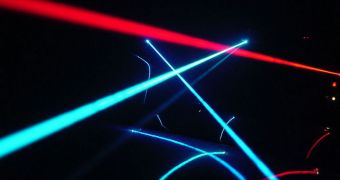Conducting science has become a lot easier since investigators learned to use instruments to aid their senses, and the microscope was undoubtedly one of the greatest inventions ever. Now, experts are seeking to innovate it.
The work is being conducted by a team of researchers at the University of Freiburg Department of Microsystems Engineering (IMTEK).
At this point, the field of microscopy is beginning to reach its limits. Massive amounts of innovation have kept this area of study going for many years, but now it's time for an entirely new approach.
Physical limitations are currently the most severe microscopy is faced with, and most of these issues have to do with the very nature of the physics underlying the behavior of light particles called photons.
The same type of limit can be seen at work while driving on a foggy day. Visibility drops from several hundred meters to no more than 50 meters, and regular headlights become rather useless.
This happens because light is scattered in the fog, and the beams no longer hit the objects in front of you. The same thing is starting to happen as researchers try to improve microscope technologies.
One of the most common applications for these instruments is in cellular biology. However, when employed in this field, they become rather useless because of the way cells are organized.
Tissues can contain clusters featuring thousands of cells, and each individual component scatters light similar to how particles in fog do it. As such, the cells at the back of the sample become invisible.
What Dr. Alexander Rohrbach, a IMTEK professor for bio- and nanophotonics wants to do is create a technology that will use self-reconstructing laser beams to clear this obstacle.
The new approaches are based on “physical concepts [that] are at least as exciting as their technical realization,” the expert says, quoted by AlphaGalileo.
“We’ve been working on this for the last four years,” adds the professor's doctoral student, Florian Fahrbach.
“Without the support of the Freiburg Cluster of Excellence BIOSS – Center for Biological Signaling Studies and Carl Zeiss MicroImaging GmbH, it would have been very difficult to realize the concept we’re now presenting!” he says.
“We managed to achieve a direct transfer from basic research to application in the form of a new microscope. That's definitely what most researchers want!” the PhD student adds.
The new laser microscope is detailed in the upcoming November issue of the top scientific journal Nature Photonics.

 14 DAY TRIAL //
14 DAY TRIAL //